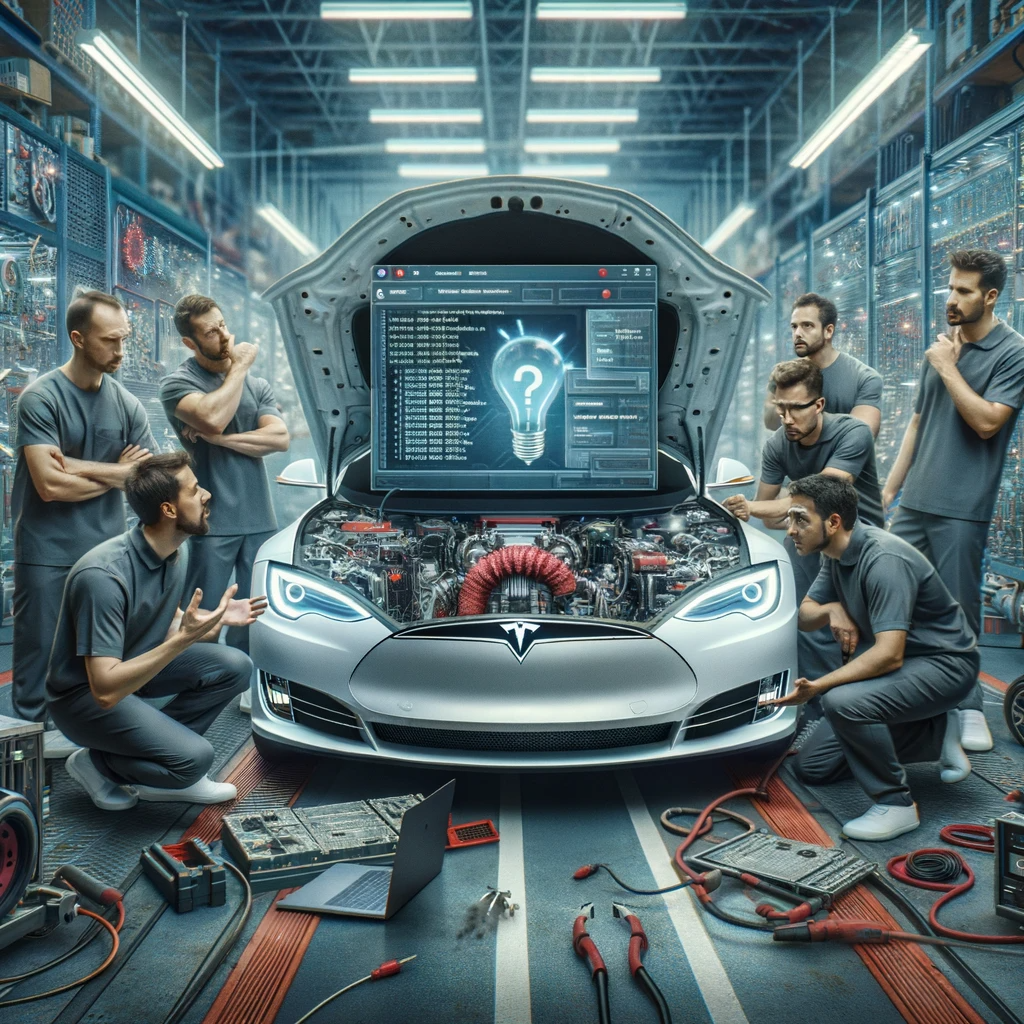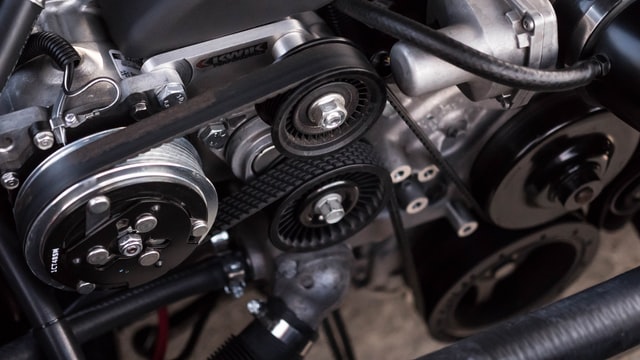What Is A Lemon Tesla?
The allure of Tesla, with its sleek designs and cutting-edge technology, attracts many eager buyers. However, not every journey unfolds as the brochure promises. Some Teslas, plagued by persistent problems and frustrations, earn the dreaded label: “lemon.” This outline unravels the mysteries of a lemon Tesla, exploring its definition, causes, legal remedies, and impact on owners.

Unveiling the Lemon: Defining the Dilemma
Defining the “Lemon”:
- Legal vs. Colloquial: Legally, a “lemon” Tesla typically falls under state Lemon Laws, which vary but generally define it as a vehicle with:
- Significant non-conformities: These are recurring and unresolved issues that substantially impair the vehicle’s safety, value, or use. Examples include persistent mechanical breakdowns, electrical malfunctions, or defective safety features.
- Multiple repair attempts: The manufacturer (in this case, Tesla) must have had several chances to fix the problem(s) within a reasonable timeframe (often defined by state law, e.g., 4 repair attempts or the vehicle being out of service for a certain number of days).
- Impaired use: The issues cannot be remedied and significantly impact the car’s normal operations.
- Beyond the Legal Definition: Colloquially, “lemon” can also encompass Teslas with frustrating but not necessarily legally-qualifying issues like:
- Persistent software glitches affecting features like Autopilot or infotainment systems.
- Poor build quality leading to cosmetic defects like uneven paintwork or interior rattles.
- Range discrepancies between advertised and real-world performance.
Lemon Law 101:
- Navigating the Maze: Every state has its own Lemon Law, so understanding your specific rights is crucial. Key factors include:
- Vehicle eligibility: Typically applies to new or recently purchased cars (often within 1-4 years).
- Non-conformity requirements: The specific definition of a “significant non-conformity” can vary.
- Number of repair attempts: Check your state’s law for the required number of repair attempts before legal recourse is possible.
- Remedies at Your Fingertips: If your Tesla qualifies as a lemon, you may be entitled to various remedies:
- Vehicle buyback: Tesla repurchases the car at its pre-defect value, potentially including taxes and fees.
- Vehicle replacement: You receive a new, comparable Tesla free of defects.
- Financial compensation: You receive financial compensation for the diminished value of your car or related expenses.
Identifying a Lemon Tesla: Red Flags and Paper Trails:
- Raising the Warning Signals: Watch for these potential lemon indicators:
- Electrical gremlins: Recurring battery issues, charging malfunctions, or abnormal warning lights.
- Paint problems: Uneven paint application, excessive peeling or cracking, rust appearing prematurely.
- Performance hiccups: Unexpected braking issues, acceleration problems, or range significantly below advertised.
- Software woes: Persistent glitches with Autopilot, infotainment systems, or touchscreen functionality.
- Documenting the Journey: Keep meticulous records of:
- All repair attempts with Tesla, including dates, descriptions of issues, and repair details.
- Communication with Tesla representatives, emails, and phone call logs.
- Photos and videos documenting the defects clearly.

The Future of Lemon Teslas: A Closer Look
Addressing Quality Control and Production Challenges:
- Investing in Automation and Robotics: Tesla embraces robots like few others, aiming to increase precision and consistency in the assembly line. From paint application to battery pack assembly, advanced robotics can minimize human error and improve defect detection.
- Optimizing Production Processes: Data-driven analytics are being implemented to pinpoint bottlenecks and inefficiencies in manufacturing. Real-time monitoring of production lines, combined with AI-powered predictive maintenance, can identify potential issues before they become lemons.
- Shifting Manufacturing Strategies: Decentralized production hubs closer to major markets could improve supply chain resilience and reduce reliance on overseas components. This might lead to stricter quality control standards within localized production lines.
Evolving Lemon Laws and Consumer Protection:
- Strengthening Lemon Law Provisions: Proposals include extending warranty periods, lowering the burden of proof for lemon claims, and expanding coverage to software-related issues. These can offer better protection for Tesla owners encountering persistent software glitches.
- Adapting to Emerging Technologies: Lemon Laws may need to evolve to address the unique challenges of electric vehicles and their complex software systems. Defining “defects” in software updates and establishing effective testing procedures are crucial areas of discussion.
- Increased Consumer Protection Efforts: Advocacy groups push for stricter regulations on the electric vehicle industry, focusing on transparency in manufacturing processes and improved communication with consumers. Government agencies, like the National Highway Traffic Safety Administration (NHTSA), may play a bigger role in investigating and addressing lemon cases.
The Road Ahead for Tesla and its Customers:
- Balancing Innovation with Reliability: Tesla faces the constant challenge of maintaining its cutting-edge image while ensuring dependable vehicles. Implementing rigorous quality control measures at every stage, from design to delivery, is crucial to preventing future lemon situations.
- Fostering Open Communication and Transparency: Building trust with customers requires open communication, acknowledging problems head-on, and promptly addressing concerns. A proactive approach to software updates, including clear explanations and patch notes, can alleviate anxieties about potential glitches.
- Building a Future of Quality, Not Lemons: Ultimately, Tesla’s brand reputation hinges on delivering consistently reliable and high-quality vehicles. Investing in robust quality control systems, embracing a customer-centric approach, and actively demonstrating a commitment to continuous improvement are key to ensuring that the “lemon” label becomes a distant memory in the Tesla narrative.

Navigating the Lemon Labyrinth
Legal Recourse:
- Consulting the Experts: Finding the right attorney is crucial. Look for one specializing in lemon law and familiar with Tesla-specific cases. Their experience can navigate the complexities of state laws, Tesla’s arbitration clause, and technical aspects of vehicle issues.
- Building a Strong Case: Gather evidence meticulously. Document repair records, communication with Tesla (emails, recordings), photos/videos of malfunctions, and witness statements. A detailed log of incidents helps establish the pattern of non-conformity and repair attempts.
- Negotiation or Litigation: Consider options – negotiating directly with Tesla for a buyback or replacement can be quicker, but legal advice is essential to ensure fair compensation. Litigation, while often a lengthy process, may be necessary if negotiations fail or the offered terms are inadequate.
- Taking on the Goliath: Be prepared for challenges. Tesla has significant resources and legal expertise. Stay composed, persistent, and rely on your attorney’s guidance. Success stories exist – owners have secured buybacks, replacements, and compensation through both negotiation and litigation.
Alternative Measures and Emotional Toll:
- Customer Service Maze: Negotiating through Tesla’s service channels can be frustrating. Long wait times, unclear communication, and inconsistent resolutions are common complaints. Persistence and clear documentation are key.
- Financial and Emotional Strain: Dealing with a lemon can be mentally and financially draining. Repair costs, missed work, and the loss of trust in a premium brand can take a toll. Seeking legal advice and community support can alleviate this burden.
Community Support:
- Sharing the Burden: Online forums and support groups for lemon Tesla owners offer invaluable solace and guidance. Sharing experiences, legal advice, and resources helps individuals feel less alone and navigate the process effectively.
- Collective Knowledge: These communities offer a wealth of information – from specific model issues to successful negotiation strategies. This shared knowledge empowers owners and strengthens their voice against a large corporation.
- Emotional Lifeline: Dealing with a lemon can be isolating and stressful. The support and understanding of fellow lemoned owners can provide much-needed emotional validation and encouragement during a challenging time.
Remember: You are not alone. With knowledge, legal expertise, and the support of the community, even the most daunting “lemon” situation can be navigated. These resources empower owners to assert their rights, seek fair compensation, and eventually get back to the road – hopefully in a reliable and fulfilling Tesla experience.
Additional Points to Consider:
- Include real-life examples of successful lemon law cases against Tesla.
- Discuss the potential emotional impact of dealing with a lemon and resources for coping with stress and financial burden.
- Provide specific online forums and support groups for lemon Tesla owners.
- Emphasize the importance of clear communication and documentation throughout the process.

The Bitter Roots of Lemon Teslas
Production Pressure and Growing Pains:
Rapid Expansion: Tesla’s meteoric rise from a niche player to a major automaker has been fueled by ambitious production goals. Increasing output puts immense pressure on manufacturing processes, with the potential for:
- Quality Control Lapses: Rushing through assembly lines can lead to missed defects, faulty components, and inconsistent workmanship. Imagine a frantic paint crew missing crucial steps in the coating process, resulting in premature peeling or bubbling (like in the image below).
- Rushed Engineering: To hit production deadlines, complex features and systems might be implemented without thorough testing or refinement. This can lead to software glitches, hardware malfunctions, and unforeseen performance issues. Think of a rollercoaster debuting with malfunctioning brakes due to rushed construction.
Studies:
- Model 3 Early Production: The initial rollout of the Model 3 was plagued by reports of misaligned body panels, paint defects, and interior trim issues, suggesting quality control struggles amidst high production targets.
- Autopilot Glitches: Tesla’s reliance on advanced driver-assistance systems (ADAS) has led to well-documented instances of phantom braking, unintended lane changes, and even crashes, raising concerns about the reliability of its complex software in certain situations.
Software Glitches and the Complexity Conundrum:
Over-reliance on Software: Unlike traditional cars, Teslas are heavily reliant on software for a multitude of functions, from basic controls like door locks and seat adjustments to crucial systems like braking and acceleration. This creates a new source of potential problems:
- Frequent Updates: Tesla frequently pushes over-the-air software updates, aiming to improve features and fix bugs. However, these updates can sometimes introduce new glitches or cause existing issues to worsen, leaving owners grappling with unexpected software hiccups. Imagine suddenly losing access to climate control or essential safety features in the middle of a drive due to a buggy update.
- Debugging Complex Systems: Diagnosing and troubleshooting software-related problems can be incredibly challenging, especially for independent mechanics or even authorized service centers. This can lead to long delays in repairs and frustration for owners desperate to get their vehicles back in top shape. Think of a mechanic struggling to decipher cryptic error codes and navigate the intricacies of Tesla’s intricate software systems.
Examples:
- Touchscreen Issues: Several Tesla models have experienced widespread touchscreen malfunctions, rendering critical controls inoperable and presenting significant safety hazards. Picture losing access to navigation, rearview camera, or even basic driving functions like windshield wipers due to a touchscreen glitch.
- Phantom Braking: Unwarranted and sudden braking due to misinterpretations by the ADAS system can be terrifying for passengers and create dangerous situations on the road. Imagine cruising down the highway when your Tesla slams on the brakes for no apparent reason, causing a potential rear-end collision.
Supply Chain Disruptions and the Domino Effect:
Global Chip Shortages: The worldwide semiconductor shortage has significantly impacted Tesla’s production, forcing them to adapt and adjust. This can lead to:
- Cost-Cutting Measures: To maintain production rates, Tesla might be tempted to use cheaper or less reliable components to compensate for component scarcity. Imagine substituting high-quality brakes with subpar alternatives due to chip shortages, potentially compromising your safety.
- Subpar Parts: Using components not originally intended for specific functions can result in compatibility issues, performance problems, and increased wear and tear. Think of installing incompatible windshield wipers that streak and malfunction due to sourcing issues.
Domino Effect: These supply chain disruptions create a domino effect, where one issue triggers another:
- Delayed Deliveries: Production slowdowns due to missing parts lead to extended wait times for customers who have already placed orders. Imagine the disappointment of waiting months for your new Tesla, only to face further delays due to chip shortages.
- Quality Control Challenges: Integrating alternative components or rushing assembly to meet deadlines can exacerbate quality control issues, increasing the likelihood of defects and lemons slipping through the cracks. Think of a Tesla rolling off the production line with an improperly installed battery due to rushed assembly caused by supply chain constraints.
Understanding these root causes empowers consumers to make informed decisions about buying Teslas and navigate potential issues with greater awareness. Lemon laws exist to offer recourse, but preventing lemons through responsible manufacturing and clear communication between Tesla and its customers remains the ultimate goal for a brighter future of electric vehicle ownership.
Deepening the Lemon Tesla Conclusion: A Symphony of Knowledge, Action, and Change
Owning a lemon Tesla isn’t just a financial headache; it’s a gut punch to the dream of sleek innovation and environmental consciousness. The frustration of repeated repairs, malfunctioning features, and diminished enjoyment can gnaw at trust and spark disillusionment. However, within this bitterness lies a seed of hope, ready to blossom into a symphony of knowledge, action, and change.
Empowered Owners, Armed with Information:
Knowledge is power, and lemoned Tesla owners are far from powerless. Equipped with the specifics of their state’s Lemon Laws and the intricacies of Tesla’s service system, they can hold their ground. Online forums and support groups pulsate with shared experiences, legal advice, and resource repositories, forming a chorus of knowledge that amplifies individual voices. Sharing repair documents, documented communication with Tesla, and legal strategies builds a powerful collective narrative, one that exposes recurring issues and challenges the “luxury car” label.
Taking Action, Lemon by Lemon:
With knowledge as their shield, lemoned owners can wield the legal sword of Lemon Laws. Consulting experienced attorneys, meticulously gathering evidence, and navigating the sometimes-tumultuous courtroom waters might be daunting, but success stories whisper encouragement. Each lemon fought against, each buyback negotiated, each settlement awarded, contributes to a broader message: consumer protection matters, even against a tech giant. The collective pursuit of justice through individual actions adds a melody of accountability to the symphony.
Shifting the Tune: Tesla, Consumer Confidence, and the Future:
The lemon Tesla issue reverberates beyond individual frustrations. It challenges Tesla’s image as a pioneer in quality and sustainability. While the company’s rapid growth and ambitious goals are commendable, they cannot be an excuse for compromised quality. Investing in robust quality control measures, streamlined production processes, and transparent communication are essential chords in Tesla’s response. Openly acknowledging and addressing lemon issues, rather than dismissing them as isolated cases, is crucial to rebuilding trust and regaining consumer confidence.
Lemon Laws: Evolving to the Beat of Technology:
As the electric vehicle landscape evolves, so must Lemon Laws adapt. Strengthening provisions, expanding coverage to software-related issues, and streamlining bureaucratic processes are critical harmonies in the legal landscape. Advocacy groups championing consumer rights must work in tandem with regulators, ensuring that the lemon melody doesn’t become a dirge for all EV owners.
A Dream Undimmed: Reliable Innovation and a Brighter Future:
Owning a Tesla should be a thrilling ride, not a bumpy lemon experience. The dream of cutting-edge technology seamlessly merging with environmental responsibility is still attainable. Through empowered owners, effective legal frameworks, and a commitment to quality from Tesla, the lemon song can fade into the background, replaced by the powerful anthem of innovation, reliability, and consumer trust. Only then can the true symphony of the electric vehicle revolution begin, with Tesla playing a harmonious part, not burdened by the dissonance of lemon cars.







